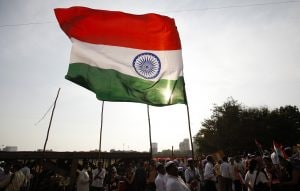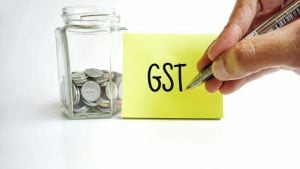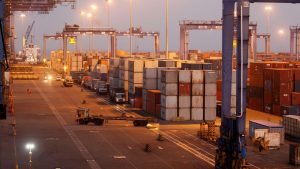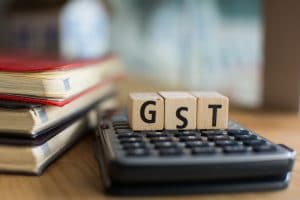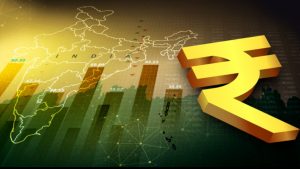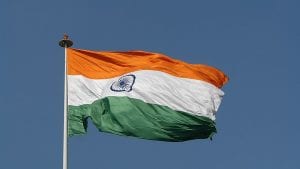View | The revenue glass—half empty or half full
Summary
Policymakers should constantly strive to achieve a rate wherein the taxpayer concludes it makes better sense to comply than take the risk of evading, writes the former Chairman of Indirect Taxes and Customs.
The revenue from the Goods & Services Tax (GST) continues to post impressive growth figures—₹1,64,882 crore was the gross revenue collection for December 2023.
This was a 12% year-on-year growth; the April to December revenue for 2023 being ₹14.97 lakh crore as against ₹13.40 lakh crore in the same period the previous year. The average monthly gross GST collection was ₹1.66 lakh crore in the first nine months of 2023-24.
The robust GST performance did seem to rub off on direct taxes—or given the close cooperation between the Central Board of Indirect Taxes (CBIC) and the Central Board of Direct Taxes (CBDT)—it could be the other way around.
The gross direct taxes collection touched ₹17.18 lakh crore for FY24 up to January 10, 2024. This was a 16.77% YoY growth. Net Corporate Income Tax grew by 12.37% and net personal income tax by 27.26%. This would suggest a better exchange of data between the two Boards leading to better compliance.
And just as one was celebrating this excellent all-round performance from both CBIC and CBDT comes the press release of the Directorate General of GST Intelligence (DGGI). The DGGI has in 2023 detected 6,323 cases involving evasion of duty of ₹.1,98,324 crore representing a 119% (YoY) increase in the detection of cases.
As the press release states, the ‘DGGI unveiled significant GST evasion in diverse sectors like online gaming, casinos, insurance sector, secondment (import of manpower services), fake input tax credit (ITC) among others’. There was also a voluntary payment of ₹28.362 crore; 140 ‘masterminds’ were said to have been arrested.
Yet another press release reveals that special drives were launched by the DGGI and the State/UT undertakings across the country on the issue of non-existent/bogus registrations and issuance of fake invoices without any underlying supply of goods and services.
This drive resulted in the detection of 29,273 bogus firms involved in suspected evasion of ITC of around ₹12,036 crore. The data reveals that the most ITC fraud cases were detected in Maharashtra, followed by Rajasthan, Delhi, Haryana, and Uttar Pradesh. Thus, despite increased technology, data analytics, and risk management technology, it would appear evasion continues unabated.
The CBDT has in, another press release spoken of 8.18 lakh crore Income Tax Returns (ITR) having been filed in 2023-24 up to December 31, 2023. This is 9% more than the ITR’s filed for assessment year 2022-23.
At first glance, this is most impressive. But as the Finance Minister has in a reply to a question in the Lok Sabha mentioned, only 1-2% of the Indian population pays income tax and declares earnings above the non-taxable income.
This was the year 2018-19. Of course, the total population includes a large chunk not liable to pay any income tax, for instance, those below the age of 18 years and those whose income is less than ₹5 lakh. However, the fact remains that only a miniscule percent of the population pays income tax.
As Prof. Arun Kumar points out in an interesting analysis of the ITRs—nearly 68% of the persons who filed returns paid nil tax; then there were several persons who paid TDS but did not file a return. Effectively he points out only 0.68% of the population paid income tax—out of these 0.016% declared an income above ₹1 crore and had a share of 38.6% of the taxable income.
The two Boards have undoubtedly been doing a valiant job in curbing evasion as the detections reveal. Further, steps have been taken to rationalise the tax structure, simplify processes and simplify compliance. There has been a relentless focus on technology, digitisation, data analytics, and the sharing of information across agencies—all these have undoubtedly been showing results.
However, juxtaposing the various data elements ibid, it is evident that there is a serious tax gap in the country or to put it more bluntly, there are far too many persons evading taxes. It is well accepted that what is detected is but a small percentage of what is evaded; and not all of what is detected stands the test of adjudication and appeal.
We are simply not collecting all that we should be getting. India’s tax to GDP ratio which represents the tax revenue concerning the GDP (gross domestic product) is low. The Government’s ability to finance its expenditure is determined by this; a higher ratio indicates a wider fiscal coverage, more revenue, and less dependence on borrowings. India’s tax-to-GDP ratio according to the Union Budget estimates for FY23, was estimated to be 10.7%; the OECD average is in the mid-30s. Obviously, there is a lot of catching up to do.
What then needs to be done? Enforcement can check evasion but never completely stop it; ultimately policy interventions are the answer. Simplification of processes which make it easier to comply should be a regular exercise.
While it is difficult to arrive at an ideal rate of taxation, policymakers should constantly strive to achieve a rate wherein the taxpayer concludes it makes better sense to comply than take the risk of evading. Close interaction with the industry, the ordinary taxpayer and enforcement agencies is a must to understand ground realities.
Technology should constantly be sharpened, and risk parameters built to detect abnormalities and throw red flags. The Boards should invest in recruiting data analytical experts to work closely with the department. There is a serious trust deficit between the taxpayer and the departments-this is a bridge which needs to be crossed one step at a time.
The field formations are key in this process and can make or break the best of policies. So constant training and sensitising the field formations is a must. Far too much time and energy is wasted in litigation—the amnesty schemes which effectively punish the honest taxpayer are never a good option. As the receipt budget shows, too much ‘revenue’ is blocked in litigation. The departments should ensure they seek to collect only what is due.
The citizens need to be aware of the ill effects of evasion—loss of revenue for the government which can otherwise be used in development and social projects, loss of jobs, generation of black money which can be used for nefarious anti-national purposes; they need to be encouraged to pay their taxes and participate in nation building. The PM’s very influential Mann Ki Baat can be an effective vehicle to drive home this message.
All this and much more has to be done if we are to reach our ambitious targets of becoming a $5 trillion economy in five years or achieving $2 trillion in exports by 2030.
— Najib Shah is Chairman (retired) of the Central Board of Indirect Taxes & Customs. Views expressed are personal.

Elon Musk forms several ‘X Holdings’ companies to fund potential Twitter buyout
3 Mins Read
Thursday’s filing dispelled some doubts, though Musk still has work to do. He and his advisers will spend the coming days vetting potential investors for the equity portion of his offer, according to people familiar with the matter









 Listen to the Article
Listen to the Article  Daily Newsletter
Daily Newsletter






